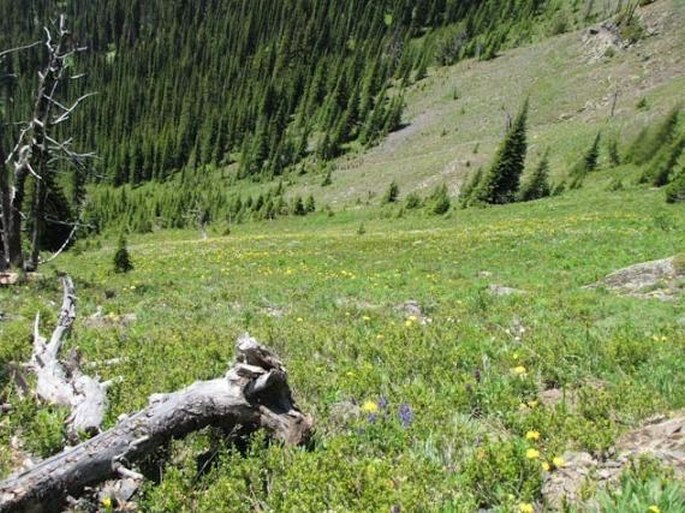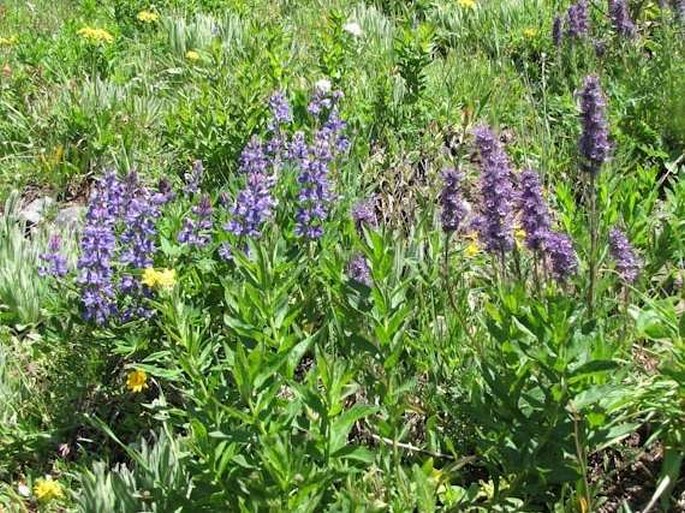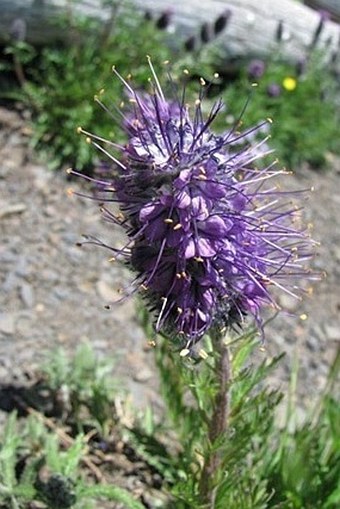Syn.: Eutoca sericea Graham
Family: Boraginaceae Juss.

Distribution: Species of the west of North America, found from Alaska through Yukon, British Columbia and Alberta, from Washington to Montana and going south to New Mexico and northern California.
Ecology: Open woods and subalpine meadows and slopes, in elevations from 1100 to 2300 m. Blooms from June to August.

Description: Perennial herb with woody base growing from a taproot. Stem 10–20 cm tall, tufted, silvery gray. Leaves are alternate, 3–12 cm long, reduced upward, divided into numerous linear or oblong lobes, covered in silky hairs. Inflorescence dense and terminal, 5–20 cm long composed of short panicles. Flowers are dark purplish blue, pentamerous, calyx divided nearly to the base, corolla bell shaped, 5–6 mm long, hairy inside and out; filaments long-exserted, 2–3 times as long as the corolla, style 6–13, long, cleft. Fruit is capsule 4–6 mm long, seeds many.
Notes: Phacelia is known to take up many minerals and it is sometimes used as biological assays to prospect for industrial minerals including gold. The genus Phacelia contains more than 150 species and is restricted to North and South America. The majority of species occur in desert areas of western US and northern Mexico.



These images were taken in Canada, British Columbia, Idaho Peak (July 2009).


